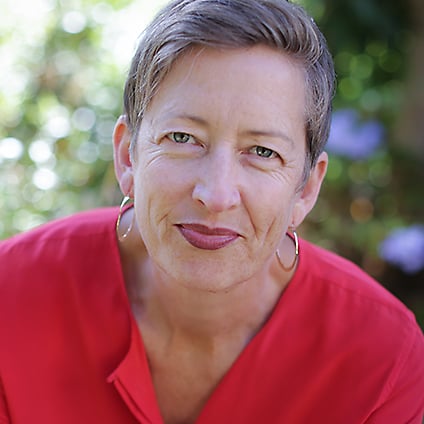How to Create Lasting Embodied Change
Why are some habits so hard to shift, even when we understand that they no longer serve us and we know exactly what to change?
In this conversation with somatic expert Staci Haines we explore some of the gateways into the body used in somatic coaching. We also explore the root cause of the somatic adaptations that live within us and how we can develop an expanded somatic perception.
Transformation through the lens of embodiment
Somatic coaches define transformation as the ability to take new actions that are aligned with our visions and our values even under the same old pressures. This requires embodied learning; from the somatic point of view if we don’t embody the new psychobiology, under pressure our old habits will come out.
Knowing that cognitive learning and insights are not enough for transformation to occur, the goal as a coach is to get the client to have an embodied experience of a new possibility in the coaching context, and to anchor that experience as deeply as possible.
When we have a point of tension, often our minds will be saying one thing but our bodies will be saying something else, and that gap is the place in which we can work through somatic coaching and create embodied change. In somatic coaching you don’t start with content – you start with the physiology because that’s the root.
The root of somatic adaptations
Habitual behaviours have useful origins (always). Essentially as we go through life, we adapt to circumstance and those adaptations become embodied habits. Many are adopted in childhood (these tend to be deeply anchored as they’ve been “practiced” for so long as well as often being related to our primary caregivers/early social environment, which has a huge impact on us).
It’s helpful to look at the social levels of influence in our lives to pinpoint where a particular habit might come from. Staci uses a model built on concentric circles from inside to outside, as follows:
- Individual
- Family, intimate network
- Community
- Institutions
- Social norms
- Landscape and spirit
Often in coaching we’re just looking at the inner circles (the individual and family/intimate circles), and it’s very helpful to look also at the wider circles of community and social norms.
Our somas (bodies) organise around 3 core human needs:
- Safety
- Belonging
- Dignity
When any of these are threatened we form adaptations (so there’s a cognitive adaptation but in somatic coaching one has to go way below that to get to how those adaptations were laid down in the nervous system and the body).
Somatic perception
Somatic coaching is all about presence (yours and the clients’), and creating true presence is about uniting gut, heart and mind so that we are fully aware in an embodied way.
As we align these three, we open to perceiving on all levels of our being – our perception expands and we begin to have access to a greater expanse of information from the field.
Staci uses the phrase, “re-embody yourself”, meaning to live inside your own skin so you can feel yourself deeply, feel the aliveness in your organism and listen to the different intelligences in yourself. This then allows you to also listen to your client form this space of embodied awareness and broadened perception.
Resources mentioned:
